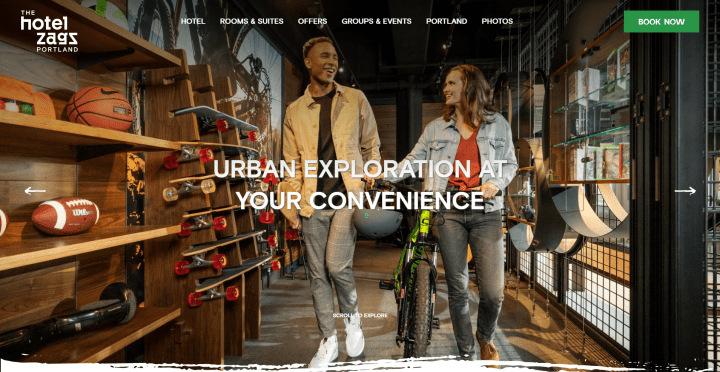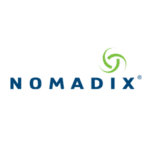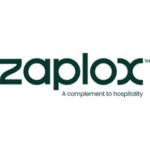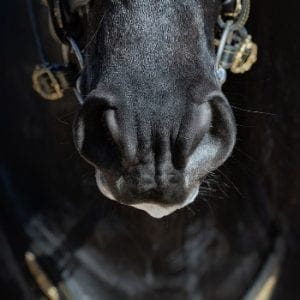 The latest digital innovations include a new “Swipe to Visit” feature in Google image results, A/B testing tools in Microsoft Ads, and the roll-out of advertisements in Instagram’s “Explore” tab. From SEO to design, find out the top five things you need to know now in hotel digital marketing.
The latest digital innovations include a new “Swipe to Visit” feature in Google image results, A/B testing tools in Microsoft Ads, and the roll-out of advertisements in Instagram’s “Explore” tab. From SEO to design, find out the top five things you need to know now in hotel digital marketing.
1. SEO: AMP-enabled websites will display as previews in Google Image search results
Google has launched a new “Swipe to Visit” feature in Google image results that will drive traffic to AMP-enabled websites. The feature displays a preview of an AMP-enabled website’s header after a user selects an image result. The user can then swipe up on the preview to load the image’s corresponding web page.
The new feature is a great way for publishers to drive awareness of editorial content through discovery in Google image results. For example, if a hotel brand has AMP-enabled editorial content, such as “Top 5 Hidden Gems in New York City,” the corresponding image for that article appears in Google image results. Users can then swipe directly from the image to view the article, providing additional exposure.
2. SEM: Microsoft Advertising is rolling out an A/B testing tool called “Experiments”
The “Experiments” tab will be rolling out globally to allow advertisers to test ad copy, landing pages, and bidding strategies. Similar to “Drafts and Experiments” in Google Ads, setting up an experiment in Microsoft will allow advertisers to create a second variation of a campaign. This will allow them to test specific elements of their ads on different audience segments.
To get started, advertisers should allow at least four weeks for each test to ensure that the amount of traffic reaches a level of statistical significance, and set the split to 50% (though it may need to be increased for lower volume campaigns). Finally, Microsoft recommends running in A/A mode for the first two weeks of the experiment (where the ads are identical), so traffic can ramp up and stabilize for the second ad set, ensuring the A/B test is set up for success.
Similar to Google experiments, NextGuest Digital A/B tests ad variations as needed throughout the ongoing optimization process to ensure optimal ad performance.
3. Display: Google announces changes to environment and position targeting settings in DV360
Google will be launching a revamped experience for environment and position targeting settings on August 26 in an effort to provide advertisers with more accurate and granular ad targeting options in Display & Video 360. Google said that the existing options were built to meet the needs of advertisers running display ads on both desktop and mobile web. With these changes, advertisers will be able to target their ads explicitly based on environment (app or web) and position (on screen or in content).
As these new granular targeting features roll out in August, advertisers will be able to more effectively reach their target audience at the right place and time.
4. Social: Instagram to begin showcasing ads in the “Explore” tab
Instagram will be introducing ads into the “Explore” tab gradually over the next three to four months. Instagram will first test the ads to promote IGTV (Instagram’s long-form video platform) before offering the ad unit to a handful of brands to beta test over the upcoming weeks.
Ads becoming immersive in the “Explore” tab experience will give Instagram advertisers a new inventory area to reach users beyond their feeds. This new feature will ultimately allow hotel brands to engage potential guests in the dreaming phase of the travel planning journey. The goal is to help users more easily discover eye-catching destination and hotel content as they explore new travel content outside of the brands and users they already follow.
5. Design: Poster-style website hero images are trending
It’s no secret that hotel brands have less than two seconds to entice and engage website visitors before they potentially abandon. A new budding design trend, poster-style website hero images, takes an eye-catching approach to solving this problem. While there are endless ways to accomplish this new design trend with illustration, typography, and rich imagery, the commonality between all approaches is that the first screen is an immersive, visual experience. The goal of poster-style hero images isn’t about getting the website visitor to immediately act — it’s more about setting the scene for interactions to come.
 What often makes this design style work is a combination of amazing imagery, impactful text, and enough of a curiosity tease to get users to further explore the website.
What often makes this design style work is a combination of amazing imagery, impactful text, and enough of a curiosity tease to get users to further explore the website.
About the guest author
Margaret Mastrogiacomo is the EVP Strategy at NextGuest Digital. NextGuest Digital uses the latest in digital marketing technology to assist hotel brands in crafting their digital presence. Through the agency’s smartCMS®, Content Personalization Engine, Smart Data Marketing, and other innovative initiatives, hoteliers see a drastic boost in direct bookings, as well as lower distribution costs and an increase the lifetime value of guests. NextGuest Digital is part of NextGuest, an all-encompassing partner that helps hoteliers acquire, engage, and retain their next guest. Based in New York City, the company is comprised of NextGuest Digital, CRM, Labs, and Consulting.
www.nextguestdigital.com | (800) 649-5076 | hello@nextguest.com




















